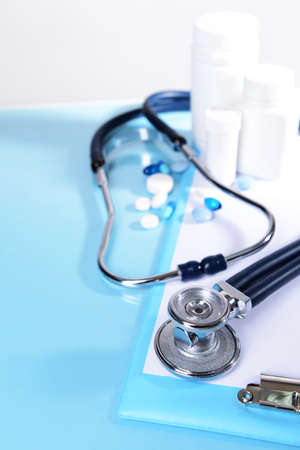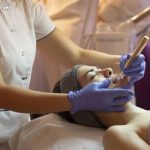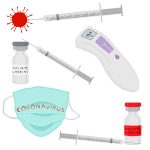1. Understanding the Importance of Rest
After any cosmetic or medical procedure, one of the most common questions is: “When can I start working out again?” While staying active is a big part of a healthy lifestyle, jumping back into physical activity too soon can actually slow down your recovery and increase the risk of complications.
Why Rest Matters After a Procedure
Rest allows your body to focus its energy on healing. Whether you’ve had a minimally invasive treatment like Botox or dermal fillers, or a more involved surgery like liposuction or a tummy tuck, your body needs time to repair tissue, reduce inflammation, and adapt to the changes made during the procedure.
Risks of Exercising Too Soon
Pushing yourself too early can lead to:
- Swelling and bruising
- Bleeding or fluid buildup (especially after surgical procedures)
- Delayed healing and prolonged discomfort
- Increased risk of infection if incisions reopen
How Long Should You Wait?
The right time to resume activity depends on the type of procedure you had. Heres a general guide:
| Procedure Type | Recommended Rest Period Before Exercise |
|---|---|
| Botox / Fillers | 24–48 hours |
| Chemical Peels / Laser Treatments | 3–5 days (avoid sweating) |
| Liposuction / Tummy Tuck | 2–6 weeks (depends on extent) |
| Breast Augmentation | 2–4 weeks (light activity), 6+ weeks (full exercise) |
Always Follow Your Provider’s Advice
Your surgeon or aesthetic provider will give you specific post-procedure instructions based on your individual case. Following their guidance closely ensures you get the best results possible—and avoid setbacks that could keep you off your feet even longer.
2. Factors That Influence Your Recovery Timeline
Getting back into your workout routine after a cosmetic procedure depends on several key factors. Everyone heals differently, and while its natural to want to jump back into physical activity, understanding what influences your recovery can help prevent complications and support better results.
Procedure Type
The type of treatment you had plays a big role in determining how soon you can return to exercise. More invasive procedures typically require longer recovery times compared to minimally invasive or non-surgical treatments.
| Procedure Type | Estimated Time Before Resuming Exercise |
|---|---|
| Botox, Fillers | 24–48 hours |
| Laser Treatments (non-ablative) | 2–5 days |
| Liposuction | 2–4 weeks (light activity), 4–6 weeks (intense workouts) |
| Tummy Tuck or Major Surgery | 6–8 weeks or more |
Individual Healing Response
Your body’s natural healing ability can vary based on age, overall health, lifestyle habits like smoking or drinking, and how well you follow post-procedure care instructions. Some people may feel ready to move sooner, while others might need extra time before getting active again.
Your Doctors Recommendations
Your provider knows the specifics of your procedure and your personal health history, so always follow their guidance. They might give you the green light for light activities like walking within a few days but advise waiting longer for high-intensity workouts or lifting weights.
Questions to Ask Your Doctor:
- When can I safely start walking or stretching?
- Are there any activities I should avoid completely?
- What signs of overexertion should I watch out for?
- If I feel discomfort while moving, what should I do?
Listening to your body and following professional advice are both essential parts of a smooth and safe recovery journey.

3. Recommended Timeline for Resuming Physical Activity
After undergoing a cosmetic procedure, its important to give your body enough time to heal before jumping back into your regular workout routine. While every person and procedure is different, there are some general guidelines that can help you ease safely back into physical activity without compromising your results or causing complications.
Understanding the Basics
Your body needs rest to recover properly, especially in the first few days post-procedure. Too much movement too soon can increase swelling, bruising, or even lead to more serious issues like delayed healing or infection. Listening to your provider’s specific instructions is key, but here’s a basic timeline you can follow as a general guide.
General Timeline for Resuming Physical Activity
| Time After Procedure | Recommended Activity Level |
|---|---|
| First 24–48 Hours | Rest completely; avoid any physical exertion |
| Days 2–7 | Light walking around the house to promote circulation; avoid sweating or raising heart rate |
| Week 2 | Short walks outside; no lifting, stretching, or high-impact activities |
| Weeks 3–4 | Gradually reintroduce light cardio like treadmill walking or stationary biking; still avoid strength training |
| Weeks 5–6+ | If cleared by your provider, begin low-intensity strength training; slowly work up to your normal routine |
Note:
The above timeline may vary depending on the type of cosmetic procedure youve had—whether its injectables like Botox or fillers, laser treatments, liposuction, or surgical procedures like facelifts or tummy tucks. Always get personalized advice from your provider before resuming any kind of exercise.
Tips for a Safe Return to Exercise
- Listen to your body: If something feels off or painful, stop and consult your provider.
- Stay hydrated: Proper hydration supports healing and energy levels during recovery.
- Avoid heat and sweat: For treatments like lasers or peels, overheating can irritate the skin and delay healing.
- Wear supportive garments: If your procedure involved compression wear (like after lipo), make sure you keep using it as advised during workouts.
Your Health Comes First
No matter how eager you are to get back into shape, always prioritize healing. Pushing too hard too soon can not only harm your results but also extend your downtime. A gradual return with patience will help you enjoy both a healthy recovery and long-lasting results.
4. Signs You May Be Pushing Too Hard
After a cosmetic procedure, it’s natural to want to get back to your regular routine, including exercise. But jumping in too fast or pushing yourself too hard can interfere with healing and even lead to complications. Here are some clear warning signs that you may need to slow down or check in with your provider before continuing your workouts.
Common Warning Signs
If you notice any of the following symptoms during or after physical activity, its a good idea to pause and reassess:
| Warning Sign | What It Could Mean | What to Do |
|---|---|---|
| Swelling increases after exercise | Your body might not be ready for activity yet | Rest, apply cold compresses, and consult your provider |
| Pain that gets worse instead of better | You could be aggravating the treatment area | Stop exercising and contact your medical team |
| Redness or warmth around the treatment site | Possible sign of inflammation or infection | Seek medical advice right away |
| Dizziness or lightheadedness during activity | Your body might still be recovering internally | Sit down immediately and hydrate; talk to your doctor if it continues |
| Visible bruising that appears or worsens post-workout | You may have strained healing tissues | Avoid high-impact activities and notify your provider |
Listening to Your Body Matters
Your body will usually give you signals when something isn’t right. Even if you’re used to a rigorous fitness routine, recovery is not the time to push limits. If anything feels off, take a break and don’t hesitate to reach out to your provider. Its always better to be safe than sorry when it comes to healing properly.
Tip:
If youre unsure about whether an activity is safe, start slow and low-impact—think walking or gentle stretching—and monitor how your body responds over the next 24 hours.
Remember:
No two recoveries are exactly alike. Pay attention to your own experience rather than comparing yourself to others.
5. Best Practices for a Safe Return to Exercise
After a cosmetic procedure, getting back to your regular fitness routine can feel exciting—but it’s important to take it slow and listen to your body. Jumping in too quickly can interfere with healing and even lead to complications. Below are some best practices to help you safely return to physical activity.
Hydrate, Hydrate, Hydrate
Your body needs extra hydration during the healing process. Whether you had a minor injectable treatment or a more invasive procedure like liposuction, drinking plenty of water helps reduce swelling and supports tissue repair. Aim for at least 8-10 glasses of water per day unless otherwise directed by your provider.
Listen to Your Body
Everyone heals differently. Pay attention to how your body feels during and after activity. Mild discomfort is normal as you start moving again, but sharp pain, dizziness, or increased swelling are signs you need more rest. Dont push through these warning signs—your body is telling you it’s not ready yet.
Ease Back Into Movement
Start with light activities such as walking or gentle stretching before returning to high-impact workouts. The timeline will vary depending on the type of procedure you had, so always follow your provider’s specific guidelines.
Sample Return-to-Exercise Timeline
| Procedure Type | Activity Restriction Period | Recommended First Activities |
|---|---|---|
| BOTOX® / Fillers | 24–48 hours | Mild walking, avoid bending over or lying flat for long periods |
| Liposuction / Tummy Tuck | 2–6 weeks (depending on area) | Sitting/standing exercises, light walking |
| Breast Augmentation | 4–6 weeks | No arm-intensive workouts; start with leg-based exercises |
Modify Your Workouts
You don’t need to go all-out right away. Modify your workouts by reducing intensity, limiting range of motion, or shortening session times. For example:
- If you’re used to running, try brisk walking first.
- If weight training is your thing, use lighter weights or resistance bands.
- Avoid exercises that directly stress the treated area until fully healed.
Create a Supportive Environment
If possible, work out at home or in low-pressure settings where you can control the pace and environment. Let your trainer or workout partner know about your recovery so they can support your modified routine.
The Bottom Line
Your health and recovery come first. There’s no “one-size-fits-all” answer for when and how to resume exercise post-procedure. Staying hydrated, easing into movement, modifying workouts, and listening to your body will help ensure a smooth and safe return to activity.


